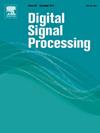Infrared and visible image fusion based on text-image core-semantic alignment and interaction
IF 2.9
3区 工程技术
Q2 ENGINEERING, ELECTRICAL & ELECTRONIC
引用次数: 0
Abstract
The text prior can effectively compensate for the limitations of image modality in capturing semantic information, which makes the fusion process more semantic and contextual. However, current fusion methods are not sufficiently adaptive to flexible text inputs and lack the precise alignment between textual semantics and image local regions. To address these issues, an image fusion method based on the text-image core-semantic alignment and interaction is proposed to bridge the gap between cross-modal information. The text-image core-semantic alignment module is designed to refine the close adherence between text and object regions through a pixel-wise coarse-to-fine segmentation mechanism. Meanwhile, a synergistic fusion pipeline is devised to establish a link between a contextual feature extraction unit and a cross-modal affine fusion module. The pipeline directs local attention to text-adherent image regions, while coupling global text features to compensate for the contextual details of whole images. In this way, the fused images enhance the adherence to the flexible text and capture richer contextual details for a more comprehensive visual representation. Extensive experiments on several datasets demonstrate that the proposed text-guided fusion method has obvious advantages over state-of-the-art methods in fusion performance.

求助全文
约1分钟内获得全文
求助全文
来源期刊

Digital Signal Processing
工程技术-工程:电子与电气
CiteScore
5.30
自引率
17.20%
发文量
435
审稿时长
66 days
期刊介绍:
Digital Signal Processing: A Review Journal is one of the oldest and most established journals in the field of signal processing yet it aims to be the most innovative. The Journal invites top quality research articles at the frontiers of research in all aspects of signal processing. Our objective is to provide a platform for the publication of ground-breaking research in signal processing with both academic and industrial appeal.
The journal has a special emphasis on statistical signal processing methodology such as Bayesian signal processing, and encourages articles on emerging applications of signal processing such as:
• big data• machine learning• internet of things• information security• systems biology and computational biology,• financial time series analysis,• autonomous vehicles,• quantum computing,• neuromorphic engineering,• human-computer interaction and intelligent user interfaces,• environmental signal processing,• geophysical signal processing including seismic signal processing,• chemioinformatics and bioinformatics,• audio, visual and performance arts,• disaster management and prevention,• renewable energy,
 求助内容:
求助内容: 应助结果提醒方式:
应助结果提醒方式:


